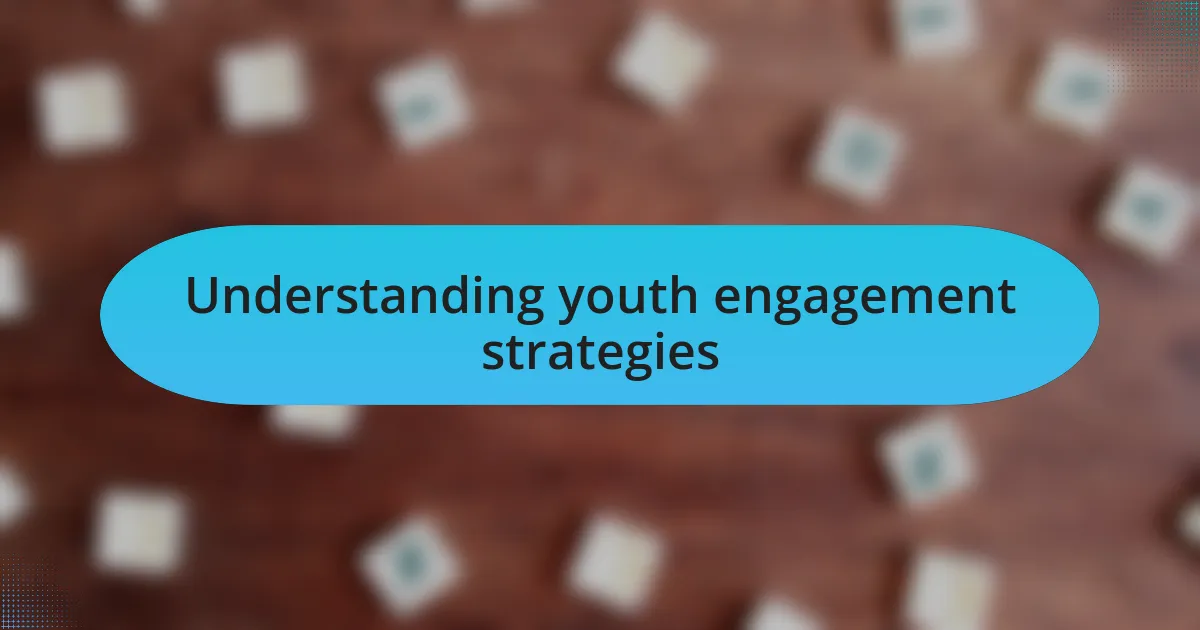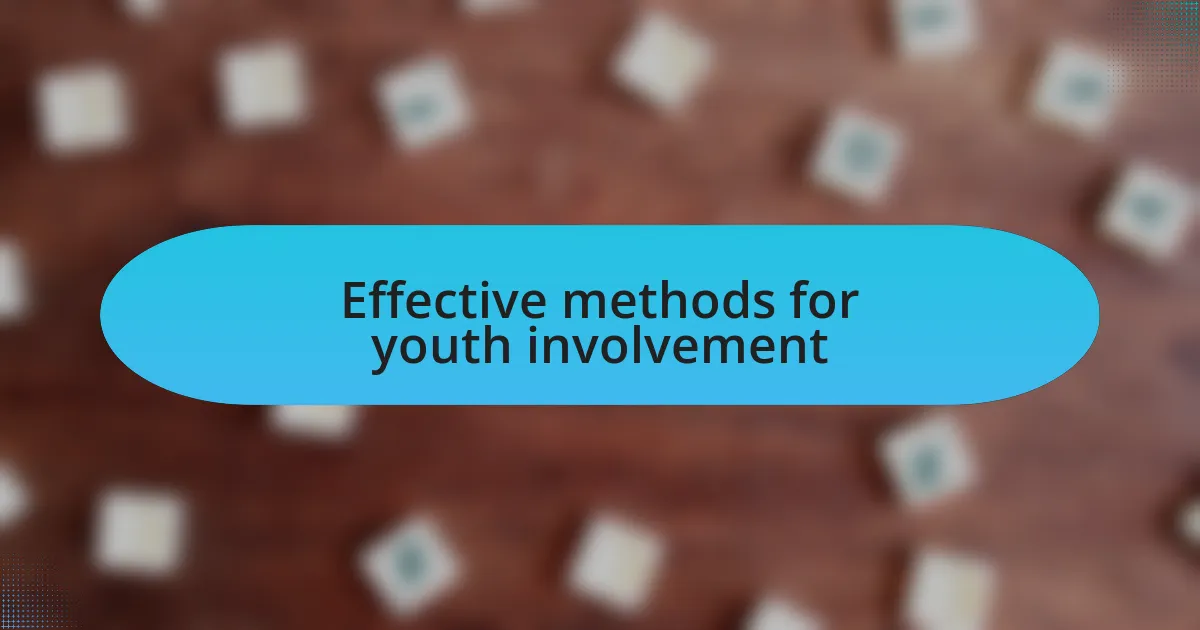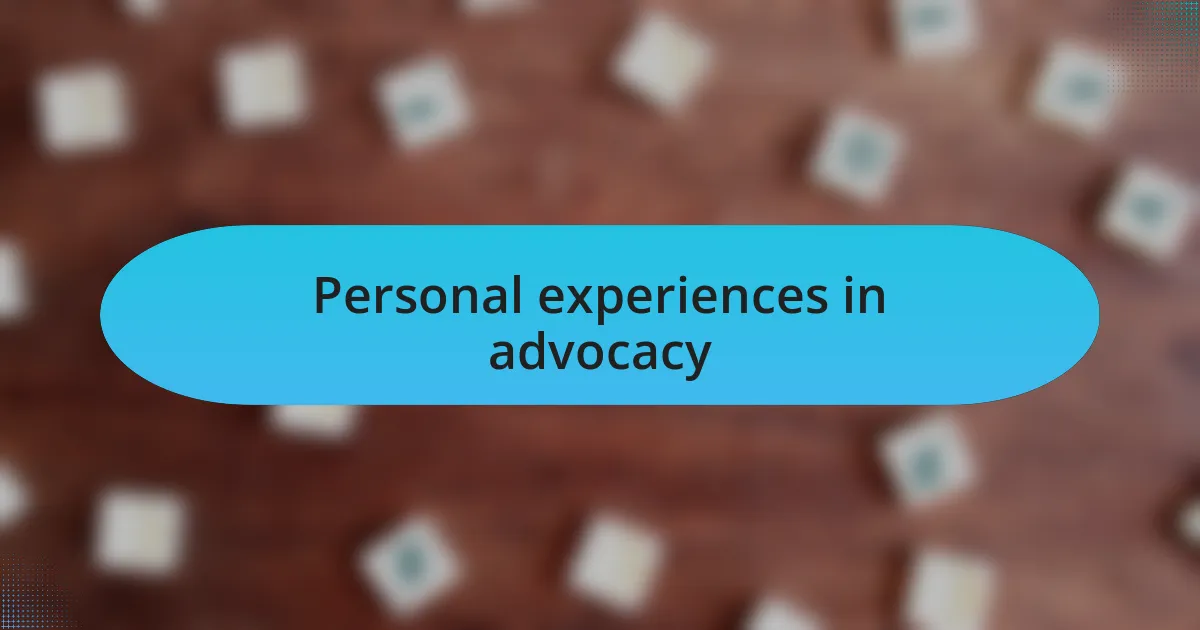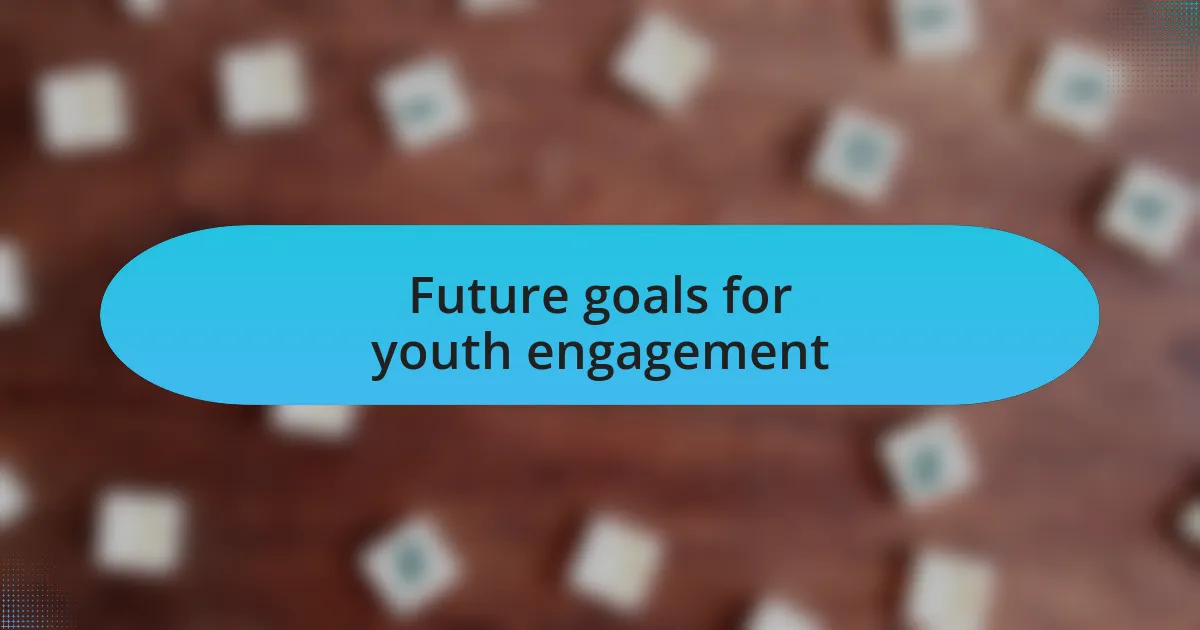Key takeaways:
- Engaging youth effectively involves creating space for authentic dialogue and leveraging social media to empower their voices.
- University student unions play a vital role in facilitating advocacy, providing platforms for discussion, and bridging communication between students and administration.
- Fostering mentorship opportunities and practical advocacy training can significantly enhance youth involvement and confidence in making impactful changes.
- Personal experiences in advocacy highlight the power of vulnerability, unity, and shared stories in creating collective movements for change.

Understanding youth engagement strategies
Understanding how to effectively engage youth is a nuanced endeavor that requires thoughtful consideration of their unique perspectives. In my experience, strategies that foster authentic dialogue often resonate the most. For instance, when I engaged in a community project, listening to the concerns and ideas of my peers transformed our approach—and it made everyone feel valued in the process.
One powerful strategy is utilizing social media as a platform for connection. Think about it: how often do young people scroll through their feeds, seeking content that inspires or resonates? I recall a campaign that encouraged participants to share their stories online. The result was astonishing—youth felt empowered to voice their experiences, fostering a sense of community and shared purpose that traditional methods failed to achieve.
Moreover, mentorship programs can make a significant impact. Reflecting on my own journey, having a mentor who genuinely cared changed everything for me. It prompts the question: how much further could youth advocacy go if we created spaces for mentorship and guidance? By nurturing these relationships, we not only equip young advocates with the necessary tools but also cultivate a supportive network of change-makers.

Role of University Student Unions
University student unions play a pivotal role in shaping the advocacy landscape on campus. I remember attending union meetings where passionate discussions often sprang up about pressing social issues. These gatherings not only provided a platform for dialogue but also empowered students to rally together, amplifying their voices on matters that truly affect their lives.
Additionally, student unions often serve as crucial intermediaries between students and university administration. In one instance, during a campaign for improved mental health services, the union acted as a bridge, facilitating meetings and ensuring student concerns were heard. It made me realize how vital these unions are in translating student experiences into actionable change. Isn’t it empowering to know that there’s a structured system in place to advocate for our needs?
Moreover, the unions champion diversity and inclusion, fostering an environment where all voices are welcomed. Thinking back, when I participated in advocacy workshops organized by my union, I was struck by the variety of perspectives brought forth. It led me to ask: how can we create more spaces like this where every student feels seen and valued? By prioritizing inclusivity, student unions not only enrich the advocacy experience but also unite students in a shared mission for change.

Effective methods for youth involvement
Engaging youth in advocacy begins with creating a sense of ownership and relevance. I remember when my university union launched a campaign focused on climate change. Instead of merely presenting facts, they invited us to share our stories about how the environment impacts our daily lives. That personal connection was powerful; it transformed a distant issue into something intimately affecting us, making participation feel essential rather than optional.
Another effective method is leveraging social media as a tool for engagement. During one of our union’s initiatives, we utilized platforms like Instagram and Twitter to reach students where they are most active. By sharing bite-sized information and interactive polls, we sparked conversations that got people excited and involved. It’s fascinating how a single post can prompt a discussion or even inspire a student to take actionable steps—don’t you think social media can amplify our voices?
Crafting workshops and training programs is also crucial for fostering practical skills and confidence in advocacy. I recall attending a leadership seminar organized by my union, where we learned how to lobby effectively and engage with policymakers. The hands-on experience not only equipped me with tools but also ignited a passion for advocating on broader issues. Can you imagine how empowering it is to feel prepared and capable of making a real-life impact?

Personal experiences in advocacy
When I think back to my early days in advocacy, one experience sticks out vividly. During a campus rally for mental health awareness, I stepped up and shared my own struggle with anxiety, something I had kept private for so long. I still remember the silence that fell over the crowd, followed by a wave of nods and empathetic responses. It was validating to see how my vulnerability encouraged others to share their stories, transforming a simple rally into a collective healing space.
Another memorable moment was when I organized a letter-writing campaign aimed at local representatives. I had never felt so driven to make change; it was as if I were holding a small piece of my community’s voice in my hands. Watching my peers come together, passionately drafting letters filled with their hopes and demands, made me realize the power of unity in advocacy. Have you ever felt that collective energy? It’s inspiring and addictive.
On a more personal note, attending an advocacy conference was a game changer for me. I remember sitting in a workshop about grassroots organizing, where experienced advocates shared their journeys, reminiscent of my own. Their stories illuminated the path forward, and I left feeling not just educated, but truly empowered and ready to instigate change. How can we not feel compelled when we see our potential reflected in others?

Future goals for youth engagement
When considering future goals for youth engagement, I often reflect on the importance of cultivating a supportive environment where young voices can thrive. Imagine fostering platforms specifically designed to highlight youth-led initiatives within the community. Wouldn’t it be empowering to see our ideas, much like seeds, taking root and growing into impactful movements?
In addition, I believe that creating mentorship opportunities can significantly enhance youth involvement in advocacy. Personally, I was fortunate to connect with a mentor who not only guided me but also challenged my perspective. This relationship opened my eyes to the broader implications of my advocacy efforts. How many others could benefit from such a connection, inspiring them to dive deeper into their passions?
Lastly, one of my goals is to integrate advocacy training within educational curricula. I can’t help but envision classrooms buzzing with discussions about societal challenges, encouraging students to think critically about the world around them. Wouldn’t it be amazing if every student graduated not just with knowledge, but also with the skills and confidence to advocate for change?